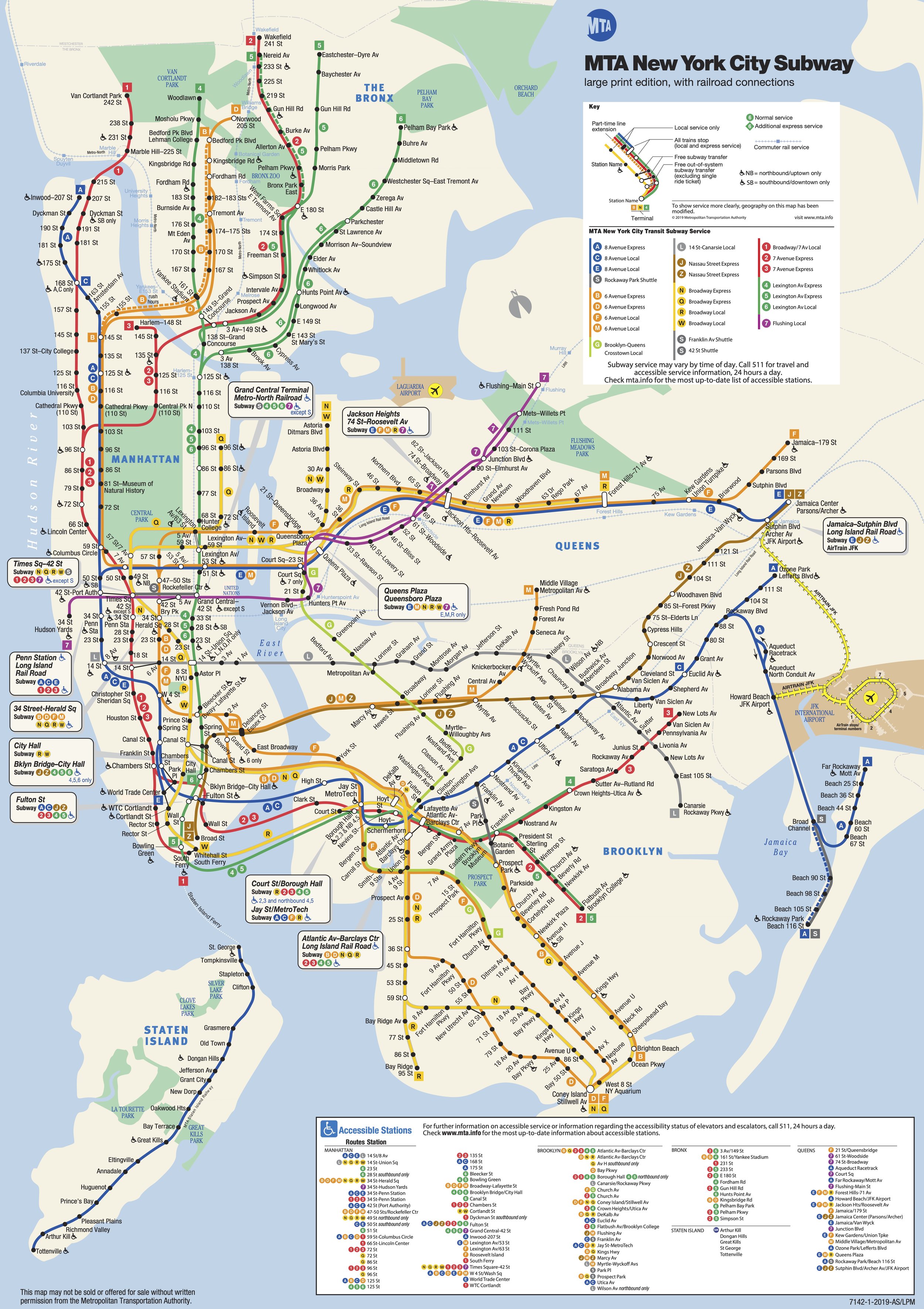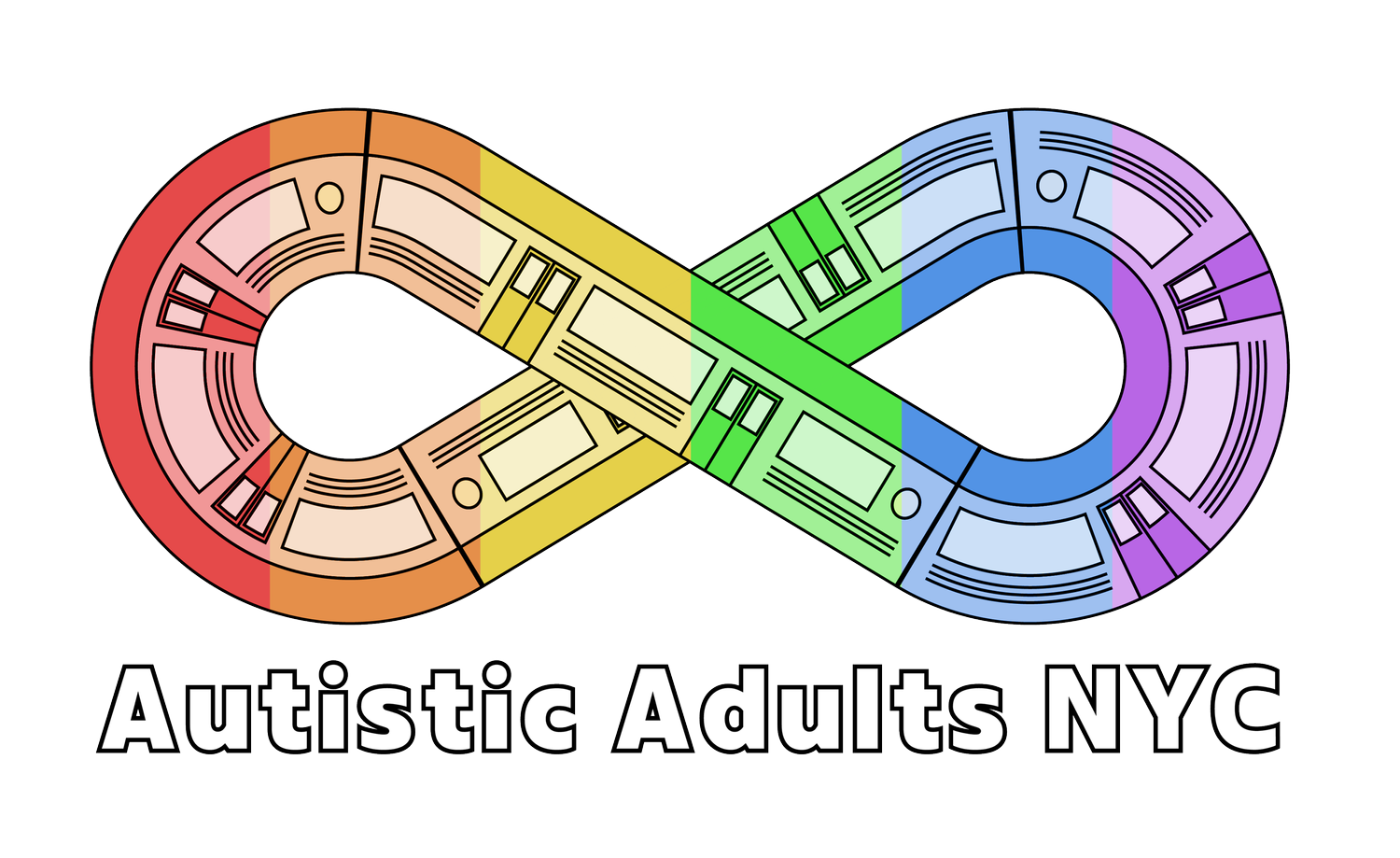
Autistic Adults NYC Transit Guide
Visiting NYC? Just moved? Trying to get more comfortable traveling on your own?
Continue reading to learn about types of transportation in NYC, navigation, and what to expect as Autistics.
Fun fact - Our logo is a subway in the shape of an infinity, similar to the rainbow infinity symbol for neurodiversity!

How to Get Around in NYC
Public Transit Options
NYC Subway: The NYC Subway consists of 28 services (1/2/3, 4/5/6, A/B/C/D, etc.) operating through 472 stations. Most services run 24/7 365 days a year, while others are part-time, operating only during specific hours.
NYC Bus: The New York City Bus (Also called New York City Regional Bus Operations) operates 325 total bus routes, which includes both local and express service.
Staten Island Ferry: The Staten Island Ferry provides free ferry service between Whitehall Terminal in Manhattan and St. George Terminal in Staten Island.
Access-a-ride: Access-a-ride is a paratransit service provided by New York City Transit under the Americans with Disabilities Act. The service is for people who are unable to use regular bus or subway service.
Citi Bike: Citi Bike is a bike sharing service that serves the 5 boroughs. It provides both regular and electric bikes at different pricing options, and has stations in all boroughs except Staten Island.
Payment
OMNY is a form of contactless payment used on public mass transit. In addition to the ability to pay using your smartphone with a digital wallet or a contactless card, you can also buy OMNY cards at participating locations (Walgreens, CVS, 7-Eleven).
Metro Cards were introduced in 1993 as an alternative to tokens, and are still in use today. They can be purchased at specialized machines at every subway stop (and Metro North/LIRR station along with your ticket).
Tip - NYCHA residents and SNAP recipients are eligible for reduced price Citi Bike plans.
Tip - People with Disabilities are eligible for Reduced-Fare MetroCards.
Other Information
Uptown, Downtown, Brooklyn Bound, Etc.: Before getting on your train, make sure it’s going in the right direction! Subways usually run in 2 directions, and your transit app will tell you which direction you need to go in. (For example, if you’re in Lower Manhattan and heading to Central Park, you will most likely need to get on the “Uptown” train!)
Local vs Express: Some lines will have trains that run “local” and “express". Express trains will stop at the bigger stations. Local trains are slower, and will go to every stop.
Transfer: Sometimes you’ll have to take 2 or more trains to get to your destination. Often you can transfer trains inside of the station. Out of system transfers require you to exit the train station where a swipe at a specific nearby station will be free.
(Tip - Transferring from subway to bus and vice versa come with free Metro Card swipes or OMNY taps)
Other Transportation Options
Rideshare (Uber and Lyft): A service to request a private vehicle through an app. It can be faster than public transit, but is often very expensive!
Yellow Taxi: Similar to rideshare, individuals can request a taxi through a mobile app. Individuals can also get a Yellow Taxi by waving at a vehicle to pull over. Yellow Taxis require medallions to operate, and are the only vehicle that have the right to pick up passengers via street hailing.

Navigation
Resources
Navigation Apps
The simplest way to figure out how to get to a destination is by plugging in the address in a navigation app. A navigation app will give you directions in real time using GPS on your phone.
Recommended App: https://transitapp.com
(Apple Maps and Google Maps can sometimes be inaccurate for transit times, but they can still be good for planning your route in advance.)
Other Recommended Transit Apps:
Maps
If you’re more comfortable with physical maps, check out these below resources:
Navigation Tips
Plan your route in advance!
Leave around 15 minutes early. There are often delays with the subway and bus system.
Bus arrival times are often less accurate than subway times. If you’re in a rush, opt to take the subway instead!
Make sure to be aware of service changes (these will often show up in your navigation app, but if you’re using physical maps, check the MTA website). Especially during weekends, there is often planned and unplanned maintenance that will disrupt normal subway operation.

Accessibility for Autistics
What to Expect
Sensory Experience
When you arrive at the subway station, the sounds of the trains arriving and leaving the station can be very loud. Sitting on the train, there may be a variety of sounds, from people talking, people playing music, the squeal of the subway brakes, and more. You may encounter different smells throughout your ride, including food, general sewage, smokers, etc.
Riding the bus, you might encounter the sound of others around you, general car/city noises, etc.
Biking or walking in the city may be an overstimulating experience as well - the visual experience of bright lights, cars blasting by, honking, many people around you, can be much for some.
Tips:
Wear noise canceling headphone or ear plugs if you’re on the train or bus. This will help lower a lot of the ambient noises around you.
Wearing a mask can help reduce smells.
Bring sensory or comfort items, like stim toys, a tablet, etc.
People may try to talk to you, ask you questions, or sell you things. - It’s perfectly okay to tell others you’re not interested, avoid eye contact, continue what you were doing, etc.
Crowds
Buses and trains will be very crowded during rush hour, as people are getting to and leaving school and work.
Tips:
If you can, avoid traveling during peak times.
The very front and very back cars on the train tend to be the least populated, as very often they are the farthest from the station entrances.
Spoons, Energy Levels, and Handling Uncertainty
Traveling can take a lot of energy! Especially if you’re traveling far, or taking multiple transfers/methods of transportation, it’s very easy to become completely depleted before you arrive at your destination. Additionally, dealing with delays and other things that can occur when riding public transit can cause a lot of stress.
Tips:
Sometimes, it’s better to take a route that takes longer than to go the quicker route with more transfers. For example, lets say you need to get to Central Park. You could take the B41 bus to the N train, or you could ride the 2 train directly there. The first route might be faster, but requires a transfer, more walking, and potentially more stress in making sure you catch the N in time!
Leave early and plan ahead! Nothing depletes your energy and causes stress more than having to sprint around the city because you missed a transfer or a train was delayed.
More Resources
RIGHT 2 RIDE - Self-Advocacy Association of New York State
Learn about NY public transportation on your own or by attending a class.
Travel Training - YAI
Training for I/DD folks in the NY Metropolitan Area.
Practice traveling by subway at the NY Transit Museum.
We hope our transit resource was helpful! Consider supporting us by getting some neurodiversity train merchandise from our store.












